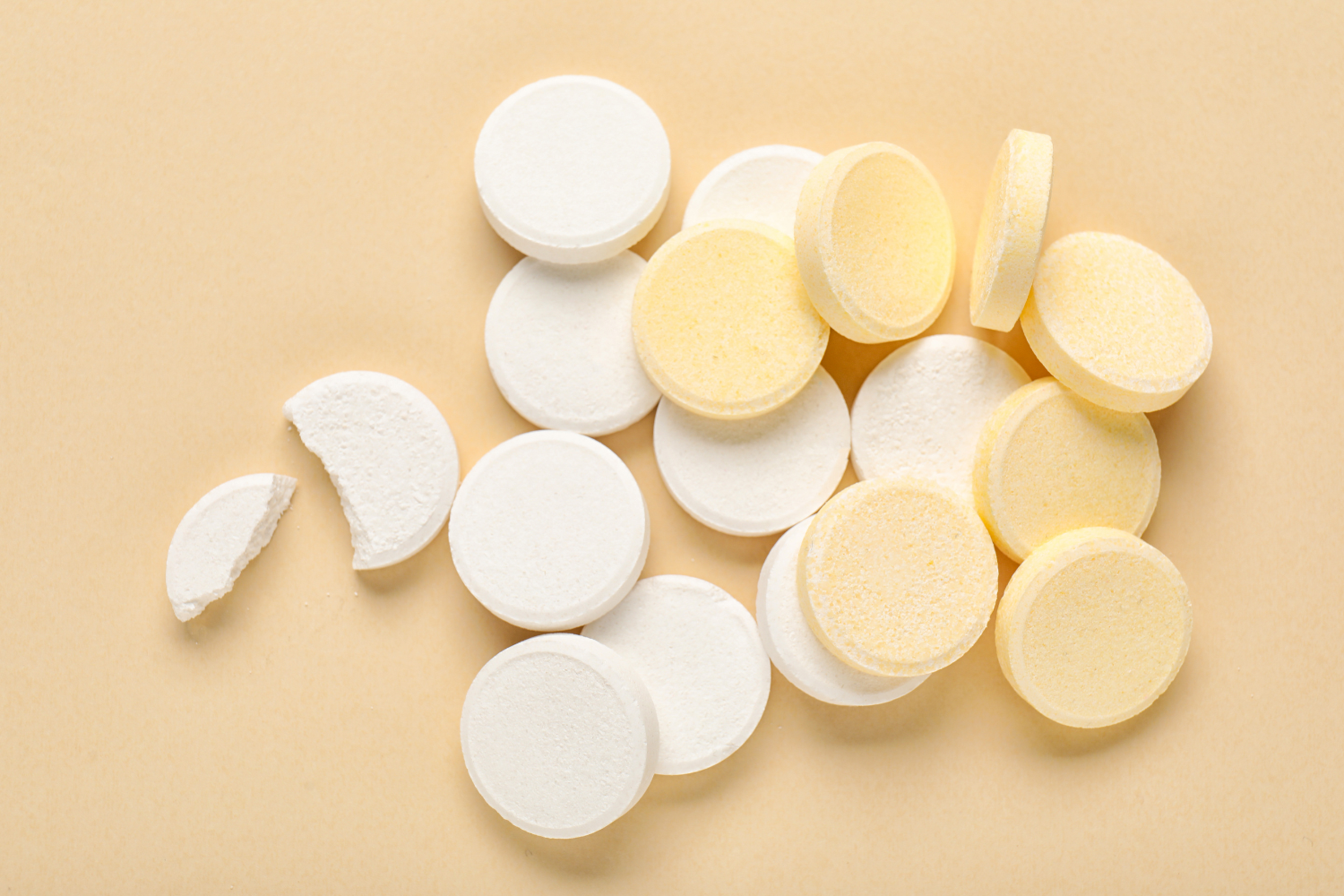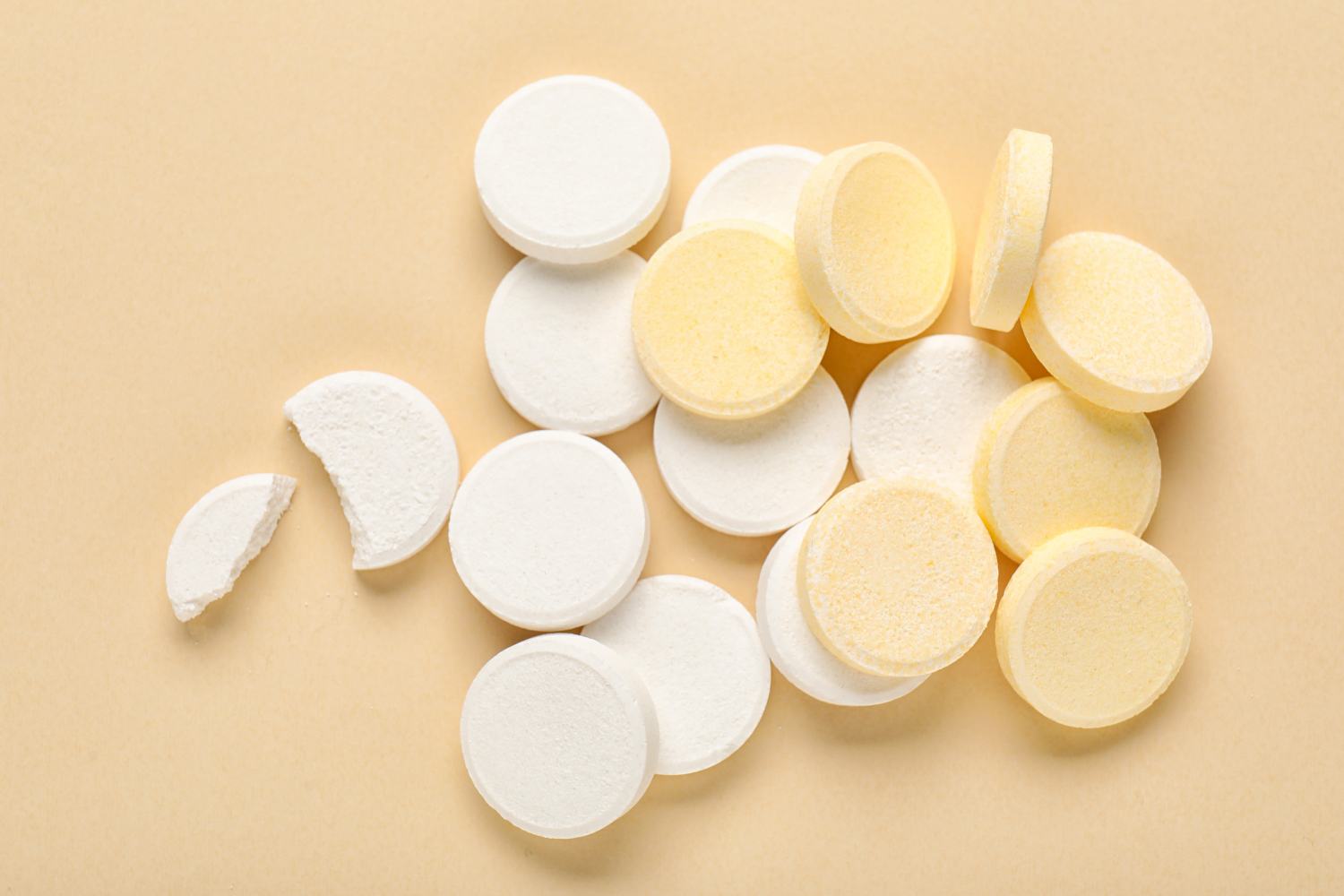Supplement bioavailability refers to the degree and rate at which an active ingredient or nutrient is absorbed by the body and made available for use or storage. In the context of dietary supplements, nutrient bioavailability is critical because it directly impacts how effectively the body absorbs and utilizes essential nutrients like vitamin D, vitamin C, and calcium.
Low bioavailability may result in reduced nutrient uptake, which can influence overall nutrient status, especially when nutrient needs are elevated. This guide explores the science behind absorption and bioavailability, how various factors—including digestive system function, dietary intake, and mineral interactions—affect bioavailability and practical strategies to increase bioavailability for better nutrient utilization.
Table of Contents
ToggleWhat is Bioavailability?
Bioavailability refers to the rate and extent that a nutrient or active ingredient is absorbed and used by the body. It is not the same as absorption alone, which only describes how a substance enters the digestive system. Bioavailability also includes how well the body can process, transport, and use that nutrient.
For example, a nutrient might be absorbed but not effectively metabolized or utilized. This is why some dietary supplements are more effective than others. Highly bioavailable forms may help improve nutrient uptake, which supports overall nutritional balance.

Factors That Affect Supplement Bioavailability
Several key elements influence how well the body absorbs and utilizes supplements. Understanding these factors helps choose more effective products and improve overall micronutrient bioavailability.
Form of the Nutrient
Nutrients can come from whole foods, synthetic sources, or herbal extracts. These forms vary in how easily the body absorbs them. For example, some synthetic nutrients may not mimic the natural form closely enough for efficient nutrient utilization.
Certain forms of supplements are known to be more bioavailable. Methylated B vitamins and chelated minerals like magnesium glycinate are often more easily absorbed than standard forms like magnesium oxide. Choosing the right form supports better mineral absorption and helps maintain continued normal status.

Delivery Method
The way a supplement is delivered also impacts how well it works. Depending on the formulation and manufacturing quality, capsules and powders may break down more quickly than some tablets.
Advanced delivery systems like liposomal and nano-encapsulation technology protect the active ingredient and improve absorption. Sublingual (under the tongue) and transdermal (through the skin) methods bypass the gastrointestinal tract entirely, allowing faster and more direct absorption into the bloodstream.

Digestive Health & Enzymes
Stomach acid and digestive enzymes play a big role in how the body breaks down supplements. Some nutrients might not be properly processed for absorption without enough acid or enzyme activity.
A healthy gut supports better micronutrient absorption. Poor gut health can limit mineral bioavailability and lead to gaps in essential nutrient intake, especially in pediatric populations and individuals with coexisting pathologic conditions.

Nutrient Interactions
Some nutrients work better when taken together, while others can compete for absorption. Understanding these interactions helps avoid combinations that reduce effectiveness.
Helpful combinations include:
- Vitamin D and calcium for peak calcium absorption
- Magnesium may support vitamin D function, which plays a role in maintaining healthy bones
- Iron and vitamin C to enhance earlier supplemental iron absorption
- Zinc and copper in balanced ratios for optimal trace minerals balance
Nutrients that may compete:
- Iron and calcium may lower each other’s absorption
- High doses of zinc can interfere with copper absorption
- Excess fiber may affect the bioavailability of certain minerals
Fat vs. Water Solubility
The solubility of a nutrient affects how it’s absorbed and stored in the body. Fat-soluble vitamins require dietary fat for proper absorption, while water-soluble vitamins dissolve in water and are more quickly used and excreted.
| Type | Examples | Absorption Requirements | Storage in Body |
|---|---|---|---|
| Fat-Soluble | Vitamins A, D, E, K | Must be taken with dietary fat | Stored in liver and tissues |
| Water-Soluble | B-complex, Vitamin C | Absorbed easily, but not stored long-term | Excreted in urine |
Lifestyle & Diet Factors
Meal timing and what you eat with supplements can improve or reduce their effectiveness. Some nutrients, like fat-soluble vitamins, require food to be absorbed properly, while others work better on an empty stomach.
Stress, caffeine, alcohol, and medications also affect how nutrients are absorbed by the body. These factors may reduce nutrient bioavailability or increase nutrient loss, making it harder to maintain adequate dietary intake and healthy nutrient levels.
How to Enhance the Bioavailability of Supplements
Improving supplement bioavailability helps ensure the body absorbs and uses nutrients more effectively. Several strategies can support better nutrient uptake and long-term nutritional status.
Choosing the Right Form
Selecting supplements in forms the body can easily recognize and absorb makes a big difference. Some forms are better absorbed than others and support more efficient nutrient utilization.
Best forms for higher absorption include:
- Vitamins: Methylcobalamin (B12), Pyridoxal-5-Phosphate (B6), and Cholecalciferol (vitamin D3).
- Minerals: Chelated forms like magnesium glycinate, calcium citrate, and zinc picolinate.
- Herbal extracts: Standardized and full-spectrum extracts, especially when combined with enhancers like black pepper (piperine).
- Formulations: forms may be more suitable for individuals who have difficulty swallowing pills or need gentler digestive support.

Pairing Supplements for Maximum Absorption
Certain nutrients work better when taken together. These combinations can improve mineral absorption and overall micronutrient bioavailability.
In some studies, black pepper extract (piperine) has been shown to improve curcumin absorption. Iron absorption improves when taken with vitamin C, while fat-soluble vitamins like A, D, E, and K are best taken with meals that include healthy fats.
Some nutrients should be taken at different times to avoid interference. For example, calcium and iron compete for absorption, so separating their intake supports better results. Knowing how nutrients interact helps maintain continued normal status and support essential functions.
Timing & Meal Considerations
Food intake can affect how well the body absorbs certain supplements. Fat-soluble vitamins and minerals like calcium are best taken with meals that contain dietary fat to improve calcium bioavailability and promote calcium deposition.
Water-soluble vitamins like vitamin C and B-complex are often absorbed more efficiently on an empty stomach. Some people find magnesium easier to take in the evening. It also plays a role in bone health and muscle function.

Using Advanced Absorption Technologies
Liposomal delivery systems help improve the absorption of fat-soluble vitamins and other nutrients by surrounding them in a fat-like layer that passes easily through the digestive system.
Micronized and nano-formulated supplements enhance absorption, though more research is needed to confirm consistent benefits across all nutrients. These technologies help with rapid uptake and are of particular interest in cases where nutrient deficiencies are harder to correct. Slow-release forms allow for steady nutrient absorption, while immediate-release options may suit needs that require quick results, such as early infancy or weight gain in low birth weight infants.
Common Bioavailability Mistakes to Avoid
Many people use supplements without realizing that small mistakes can lower their effectiveness. Understanding these common issues helps improve nutrient absorption and supports better health outcomes.
Taking Supplements with Poor Absorption Rates
Some supplements use forms that the body doesn’t absorb well. Non-chelated minerals like magnesium oxide and calcium carbonate have lower bioavailability and may not support normal bone mineralization or peak calcium absorption. Choosing less absorbable forms may reduce the effectiveness of supplementation over time.
Ignoring Proper Timing and Nutrient Combinations
Taking certain nutrients at the wrong time or in the wrong combinations can reduce how much the body absorbs. Iron taken with calcium, for example, limits iron absorption. Missing these details can impact how well the body absorbs all the nutrients needed for normal growth and health maintenance.
Buying Low-Quality Supplements with Ineffective Formulations
Some supplements are made with inactive or poorly sourced ingredients. Low-quality formulations may lack the active ingredient in a bioavailable form, reducing their ability to improve nutrient status. Products without third-party testing or clear labeling may also inadvertently mask differences in potency.

The Future of Supplement Bioavailability
Supplement companies are exploring new ways to improve how nutrients are absorbed and used in the body. This future includes better science, cleaner ingredients, and smarter personalization.
Innovations in Supplement Formulation
Advanced technologies like AI-driven personalization are helping tailor supplement plans to individual needs. These innovations consider dietary intake, coexisting pathologic conditions, and genetic factors to improve micronutrient absorption and overall nutrient utilization.
Growing Demand for Science-Backed, Highly Bioavailable Products
There is increasing demand for supplements with proven, high bioavailability. Health-conscious consumers and businesses in the wellness space want products supported by research that shows how the body absorbs and uses nutrients efficiently across different life stages, including early childhood and critical periods of development.
Sustainability and Clean-Label Trends in Supplement Production
Clean-label products made with fewer additives and more traceable sources are growing in popularity. These supplements aim to deliver essential nutrients while also meeting the needs of a balanced diet, reducing the impact on the environment, and supporting healthy gut function with fewer synthetic ingredients.

Choosing Smarter Supplements: A Practical Takeaway
Understanding supplement bioavailability helps businesses and individuals select products that support real nutrient absorption and measurable health benefits. Choosing supplements in a highly bioavailable form, paying attention to timing, and matching nutrients properly can all improve how the body absorbs and uses essential nutrients. The next steps include reviewing your current supplement choices, making informed adjustments to support mineral and micronutrient bioavailability, and exploring advanced formulations that align with today’s health and wellness goals.
Frequently Asked Questions
What does bioavailability mean in supplements?
Supplement bioavailability refers to how much of a nutrient is absorbed and used by the body after a supplement.
How do you increase the bioavailability of dietary supplements?
To increase bioavailability, choose well-formulated supplements, pair nutrients strategically, and take them with the right meals.
Which form of vitamin has the highest bioavailability?
Liposomal, liquid, and methylated vitamins typically offer the highest bioavailability for efficient nutrient absorption.
Why is nutrient bioavailability important in health supplements?
Nutrient bioavailability is crucial because it determines how effectively supplements support energy, immunity, and overall health.
What affects the bioavailability of vitamins and minerals?
Bioavailability is affected by nutrient form, digestive health, timing, meal composition, and interactions with other nutrients.
References
- D’Alessandro, C., Benedetti, A., Di Paolo, A., Giannese, D., & Cupisti, A. (2022). Interactions between Food and Drugs, and Nutritional Status in Renal Patients: A Narrative Review. Nutrients, 14(1), 212. https://doi.org/10.3390/nu14010212
- National Institutes of Health. (2024). Iron – Health Professional Fact Sheet. https://ods.od.nih.gov/factsheets/Iron-HealthProfessional/
- National Institutes of Health. (2022). Magnesium – Health Professional Fact Sheet. https://ods.od.nih.gov/factsheets/Magnesium-HealthProfessional/
- National Institutes of Health. (2025). Vitamin A and Carotenoids – Health Professional Fact Sheet. https://ods.od.nih.gov/factsheets/VitaminA-HealthProfessional/
- National Institutes of Health. (n.d.). Vitamin and Mineral Supplement Fact Sheets. https://ods.od.nih.gov/factsheets/list-VitaminsMinerals/
- National Institutes of Health. (2017). Your Digestive System & How it Works. https://www.niddk.nih.gov/health-information/digestive-diseases/digestive-system-how-it-works
- Puttasiddaiah, R., Lakshminarayana, R., Somashekar, N. L., Gupta, V. K., Inbaraj, B. S., Usmani, Z., Raghavendra, V. B., Sridhar, K., & Sharma, M. (2022). Advances in Nanofabrication Technology for Nutraceuticals: New Insights and Future Trends. Bioengineering (Basel, Switzerland), 9(9), 478. https://doi.org/10.3390/bioengineering9090478
- U.S. Food and Drug Administration. (2020). Bioavailability and Bioequivalence Studies Submitted in NDAs or INDs — General Considerations. https://www.fda.gov/regulatory-information/search-fda-guidance-documents/bioavailability-and-bioequivalence-studies-submitted-ndas-or-inds-general-considerations




